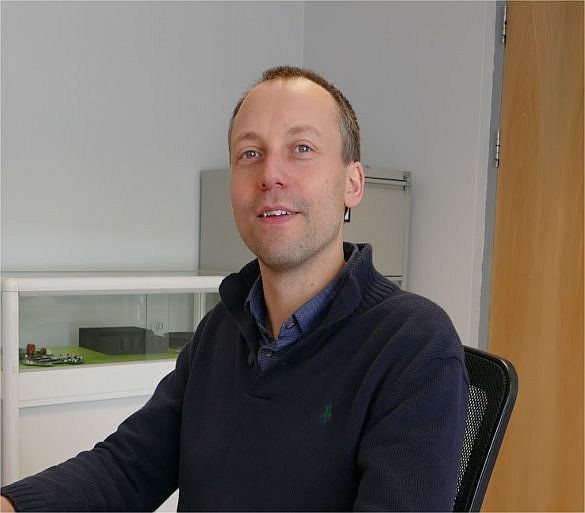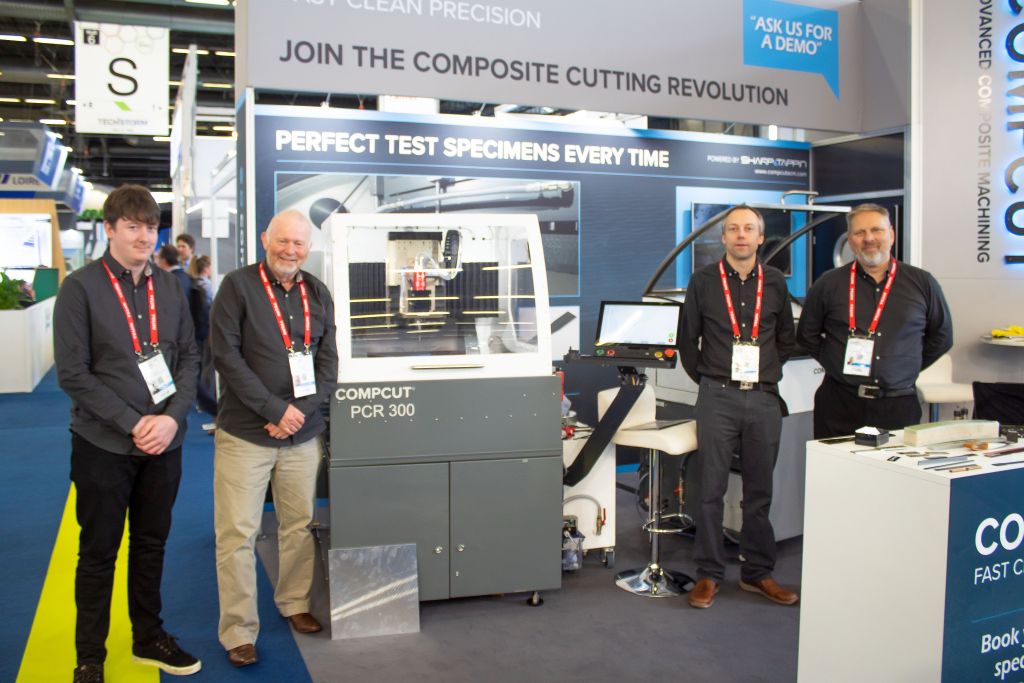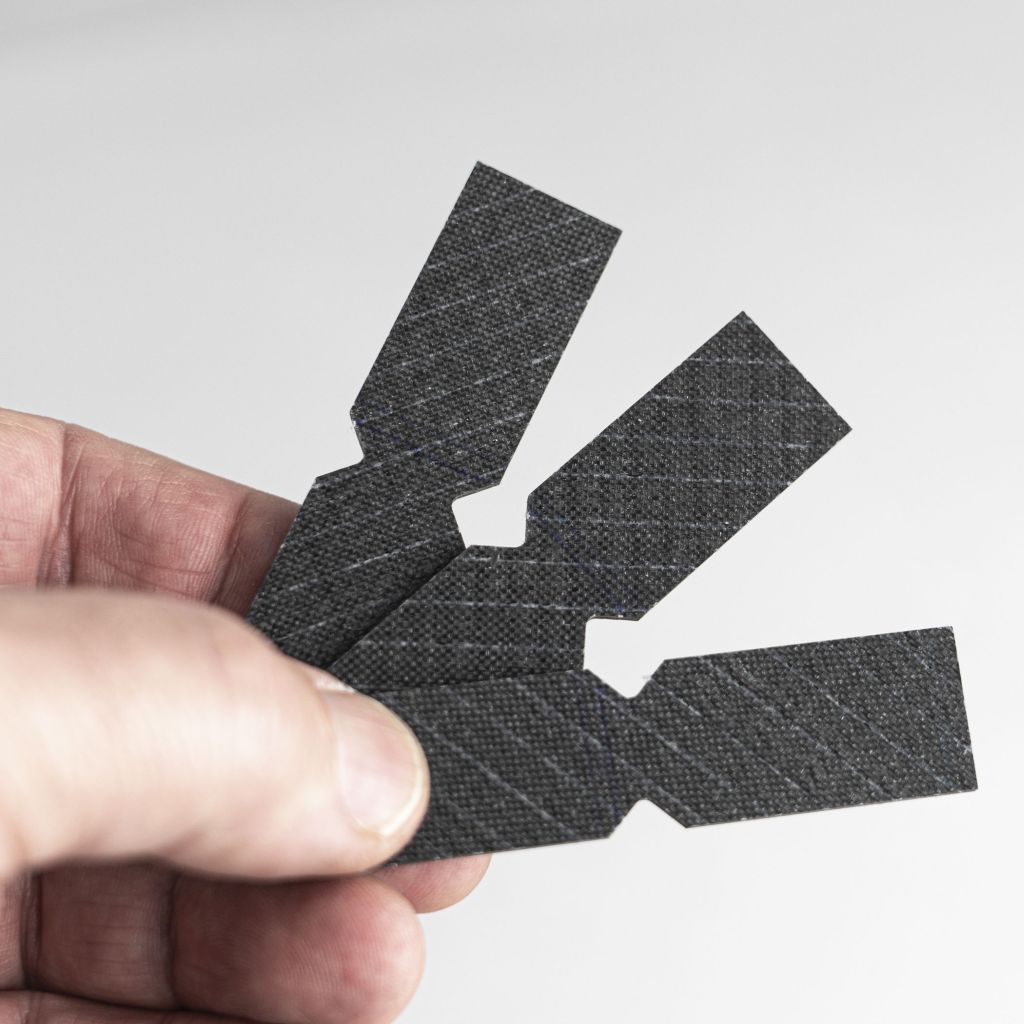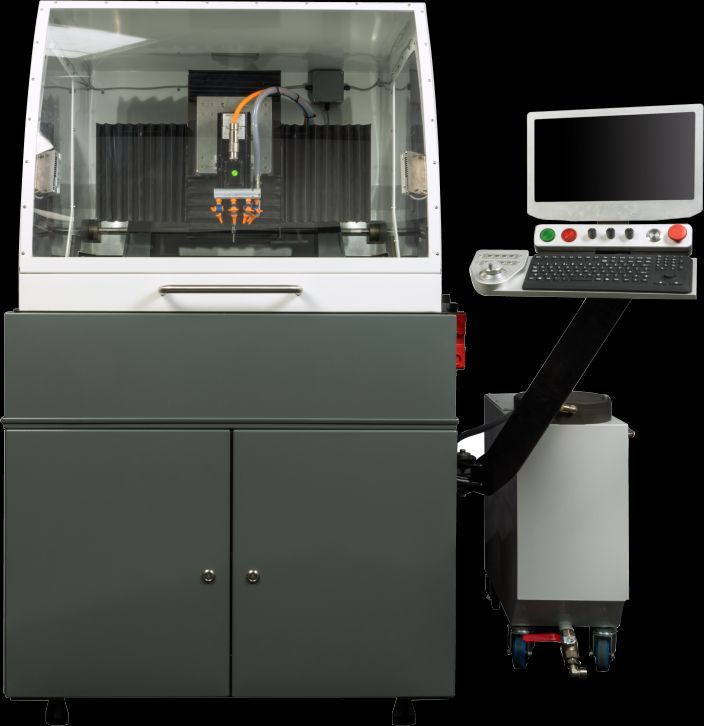Meeting the composites cutting challenge

Ben Sharp, technical director of Devon-based specialist engineers and systems developers, Sharp & Tappin describes how the company is helping customers meet the latest composite cutting challenges.

The challenges faced in accurately cutting and shaping test samples from advanced composites, such as ceramic matrix composites (CMCs) evolve as rapidly as the materials themselves, with test centres and R&D departments constantly striving to employ the best technologies to be able to machine precise and repeatable samples. Sharp & Tappin, the innovative specialist engineers and systems developers have long anticipated this growing demand for precision machining applications that can specifically cope with advanced composites.
Q) Firstly, which industries are you seeing the most take-up for your solutions?
Our client base is pretty broad. If you are cutting composites for test samples or production then there is likely an opportunity for a Compcut machine to speed things up, make it safer or clean up the process. Aerospace is one of our largest markets at about 27%. Academia and research make up around 25% followed by about the same with independent test labs and material manufacturers - with the rest split between automotive, F1 and renewables.
Q) Why do we need specialised composite cutting machine tools?
Standard machine tools aren’t really designed for composite materials. One major consideration is debris made by cutting composite is more like that created when grinding, and the guarding on standard machines is not really designed to keep this away from sensitive items, such as the linear systems this can lead to expensive repair bills in a relatively short time. Also, the feeds and speed of typical machining centres aren’t really in the right range for composites.
With regards to tooling, this is a big subject and initially a bit of a minefield. There are many different technologies applied to composites. The term ‘composite materials’ covers such a broad potential range of materials and combinations there is not really one answer. You have to take every application and apply the knowledge you have and even sometimes come up with new techniques, processes and tooling to successfully cut a particular material. We tend to favour abrasive based tools rather than ‘chipping’ type tools that would be used with more conventional metals. Composites are surprisingly abrasive themselves and wear standard tools very quickly.
Q) What elements of composite cutting need to be considered for any typical job and how do they differ to metallic cutting?
Generally, damage to the reinforcement/fibres needs to be kept to an absolute minimum as this affects the results for test specimens or strength of the part. Heat is a topic that is often overlooked when machining composites, which don't tend to chip like metals, so the swarf does not remove heat in the same way. Many composites - especially epoxy and thermoplastic-based ones - have a very low melting point compared to metals. This has a twofold effect: as they soften, they become harder to machine, with some composites becoming ‘chewy’ at 60-100ËšC compared to metals in 400-600s.

This means at relatively low temperatures you can start to deform or de-nature the material during the cutting, which is an unacceptable result of the machining process. Delamination and cracking - especially micro-cracking - are also other topics that are important with composites, as these affect the properties of the material and the results of testing, and often these aren’t necessarily visible to the human eye and require microscopy to understand what’s going on.
Q) What are the main challenges and difficulties of cutting composite test pieces?
Each application varies, but often even the simplest things like, ‘how do we even hold this thing down or clamp it’ can be the hardest. This, coupled with variances in the type of materials under the composite banner mean you never quite know what you are getting into when you start new material trials. Similarly, the standards vary wildly in their requirements with regards to accuracy, perpendicularity and parallelism. Some standards have fairly loose tolerances, but at the other end of spectrum, you have compression after impact (CAI) specimens that are tied up to 0.02mm perpendicularity around all four sides, which can be a real challenge to achieve even with a machining centre.
This is one of the things that drove the development of our Precision Composite Router (PCR) product range. Despite a standard calling for a particular tolerance or size of specimen, the effect of having consistent sized samples with an excellent surface finish significantly improves the results, especially the scatter or variance between samples. We’ve seen a 50% improvement in results taking a client from regular failure to 100% pass rate just by improving their specimen cutting process from a tile saw to a Compcut ACS.
Q) What are the main focus areas for your R&D and how is tool life and consistency performance being improved over time?
Our R&D programme over the last few years has been focused on trying to replicate the wide material compatibility, surface finish and ease of use of our ACS composite saws, which provide a linear cutting solution into a 3-axis process allowing the creation of complex geometries. We’ve realised this by creating our Precision Composite Router. Our PCR product range is now able to provide a unique multi-axis machining solutions specifically for composites.

R&D is ongoing; the machines themselves are quite well-established with the first models now over two years in production. We are still working on tooling and application knowledge. This year we have developed a wet vacuum bed system for holding down flat materials that can withstand the harsh composite debris created when machining composites. There is always ongoing development with regards to the actual cutting tools. This year, we have been working with a UK-based manufacturer developing our own range of abrasive diamond routing tools to complement the machines alongside building a database of materials and tool types so we can provide a turnkey solution to our clients of machine, cutting tools and process.
Q) What differentiates your company from the competition and why should a customer use you over your nearest rival?
We are 100% focused on providing solutions for our customers, not just another problem. What we offer are machine tools specifically designed to meet the challenges of machining composite materials and provide these as solutions to cutting problems. We are flexible; a customer can purchase the machine and work out their own tooling and application process or they can buy the machine fully-equipped with all the tooling and programming to achieve their composite material cutting challenge. We also understand that composite engineers are not necessarily CNC machinists, and we have developed programming methods and a conversational user interface that makes our machines very easy to use. This coupled with our large database of materials, tooling and process gives us what we believe is a pretty compelling offer above the competition.
We are in a unique position where we don't have much direct competition as what we do is quite niche - but we do have a lot of indirect competitors. Whether it's the cutting challenge itself, the health & safety concern, the speed of cutting, the accuracy and surface finish or a financial business case that drives the sales decision, I am confident Compcut stands up against even some largest global players' proposals.
Q) What do you feel are the most important assets of a company?
Ultimately, our people and our team are key but won’t always succeed without strategy and direction. Experience helps to guide strategy. Technology is important, but needs to be used wisely. It’s easy to get tangled up in complexity when actually, some good basic engineering principles might be the solution.

Location is less important these days – we’re based in North Devon, which does have some challenges at times but we have machines in a wide array of countries over the world. One thing that is key is having local support and backing this up with access to the specialist back at the factory. We are busy building the Compcut international network by recruiting strategic partners around the world.
Q) Would you say that your long-standing partnerships have brought huge benefits, particularly as trusted relationships can lead to a better way forward for all?
Absolutely. We pride ourselves on building long-lasting relationships with our clients. We don't just sell a machine and move on - in fact quite a number of our clients have become more like friends than clients. These relationships have great mutual benefits. Our clients reach out for our help when they have a challenge and we use their feedback to drive the development of the next process or product. We have a number of key, long-standing supplier relationships where our loyalty to them over years has paid off, as they have been generous with helping us manage the supply chain crisis.
Q) Finally, where to next for your company?
At the of start 2019, we were just starting to look at expanding seriously into Europe. This obviously got put on hold by the pandemic. We are now working hard on building an international sales and support network, via a team of global partners so we can add Compcut composite machining solutions to the tool kit of materials engineers all over the world.









